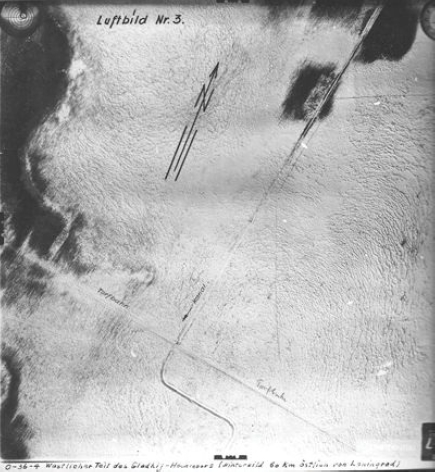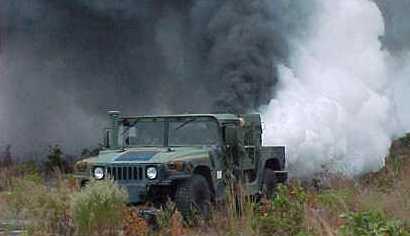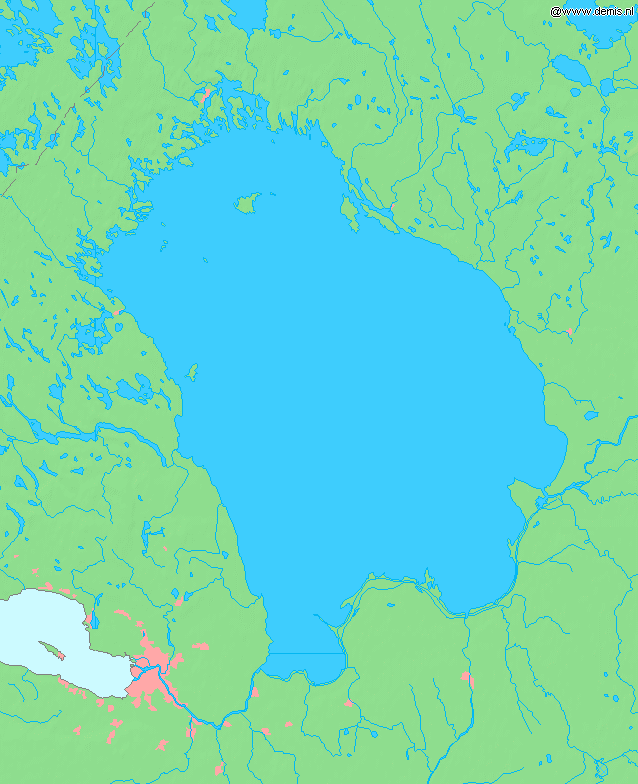|
Battle Of Sukho Island
The Battle of Sukho Island, also known as Operation Brazil, was an amphibious operation and naval engagement on Lake Ladoga between the Soviet Navy and a German Luftwaffe naval detachment during World War II. Background During the Siege of Leningrad the Soviets moved supplies to the city through Lake Ladoga. The Axis deployed the Finnish Ladoga Naval Detachment, Naval Detachment K (including the Italian XII Squadriglia MAS), and the German Luftwaffe Einsatzstab Fähre Ost, to interdict the route;Kijanen, Kalervo (1968). Suomen Laivasto 1918–1968 II. Helsinki: Meriupseeriyhdistys/Otava. pp. 185–197 MAS conducted torpedo boat attacks.Ruge, F., "The Soviets As Naval Opponents 1941-1945", 1978, p.26 The combined Axis force failed to significantly interrupt traffic. The culmination of Axis operations was the raid against Sukho Island, 20 km from the southern shore of the lake, which covered supply lines and the approaches to Soviet bases. Axis forces The attack was comma ... [...More Info...] [...Related Items...] OR: [Wikipedia] [Google] [Baidu] |
Eastern Front (World War II)
The Eastern Front of World War II was a Theater (warfare), theatre of conflict between the European Axis powers against the Soviet Union (USSR), Polish Armed Forces in the East, Poland and other Allies of World War II, Allies, which encompassed Central Europe, Eastern Europe, Northern Europe, Northeast Europe (Baltic states, Baltics), and Southeast Europe (Balkans) from 22 June 1941 to 9 May 1945. It was known as the Great Patriotic War (term), Great Patriotic War in the Soviet Union – and still is in some of its successor states, while almost everywhere else it has been called the ''Eastern Front''. In present-day German and Ukrainian historiography the name German-Soviet War is typically used. The battles on the Eastern Front of the Second World War constituted the largest military confrontation in history. They were characterised by unprecedented ferocity and brutality, wholesale destruction, mass deportations, and immense loss of life due to combat, starvation, expos ... [...More Info...] [...Related Items...] OR: [Wikipedia] [Google] [Baidu] |
XII Squadriglia MAS
The XIIª Squadriglia Squadriglia MAS (''Mezzi d'Assalto'') (Italian for "12th Assault Vessel Squadron") was a formation of the Italian Royal Navy (''Regia Marina'') which served on Lake Ladoga as part of the Axis siege of Leningrad during World War II. Background On 22 June 1941 the Axis, led by Nazi Germany, launched Operation Barbarossa, the invasion of the Soviet Union. During the summer of 1941 the Germans advanced into the USSR on three broad fronts, towards Leningrad in the north, Moscow in the centre, and Kiev in the south. By August 1941 the German Army Group North was on the outskirts of Leningrad, having occupied the Baltic states and northwest Russia, while the Finns had advanced south into the Viipuri peninsula, leaving the city surrounded and cut off from all communication by land. The city's only communication route was by water, over Lake Ladoga. To service and preserve this route, the Soviets collected a fleet of over 50 merchant vessels, protected by more t ... [...More Info...] [...Related Items...] OR: [Wikipedia] [Google] [Baidu] |
Baltic Sea Operations Of World War II
Baltic may refer to: Peoples and languages *Baltic languages, a subfamily of Indo-European languages, including Lithuanian, Latvian and extinct Old Prussian *Balts (or Baltic peoples), ethnic groups speaking the Baltic languages and/or originating from the Baltic countries *Baltic Germans, historical ethnic German minority in Latvia and Estonia *Baltic Finnic peoples, the Finnic peoples historically inhabiting the area on the northeastern side of the Baltic sea Places Northern Europe * Baltic Sea, in Europe * Baltic region, an ambiguous term referring to the general area surrounding the Baltic Sea * Baltic states (also Baltic countries, Baltic nations, Baltics), a geopolitical term, currently referring to Estonia, Latvia and Lithuania * Baltic Provinces or governorates, former parts of the Swedish Empire and then Russian Empire (in modern Latvia, Estonia) * Baltic Shield, the exposed Precambrian northwest segment of the East European Craton * Baltic Plate, an ancient tectonic pla ... [...More Info...] [...Related Items...] OR: [Wikipedia] [Google] [Baidu] |
1942 In Finland
Year 194 ( CXCIV) was a common year starting on Tuesday (link will display the full calendar) of the Julian calendar. At the time, it was known as the Year of the Consulship of Septimius and Septimius (or, less frequently, year 947 '' Ab urbe condita''). The denomination 194 for this year has been used since the early medieval period, when the Anno Domini calendar era became the prevalent method in Europe for naming years. Events By place Roman Empire * Emperor Septimius Severus and Decimus Clodius Septimius Albinus Caesar become Roman Consuls. * Battle of Issus: Septimius Severus marches with his army (12 legions) to Cilicia, and defeats Pescennius Niger, Roman governor of Syria. Pescennius retreats to Antioch, and is executed by Severus' troops. * Septimius Severus besieges Byzantium (194–196); the city walls suffer extensive damage. Asia * Battle of Yan Province: Warlords Cao Cao and Lü Bu fight for control over Yan Province; the battle lasts for over 1 ... [...More Info...] [...Related Items...] OR: [Wikipedia] [Google] [Baidu] |
Road Of Life
The Road of Life () was the set of ice road transport routes across Lake Ladoga to Leningrad during the Second World War. They were the only Soviet winter surface routes into the city while it was besieged by the German Army Group North under ''Feldmarschall'' Wilhelm Ritter von Leeb. The routes operated in the winters of 1941-1942 and 1942-1943. Construction and operation were performed under German artillery and aerial bombardment. In January 1943 the Soviet's Operation Iskra broke the encirclement, and the ice roads were used in conjunction with land routes for the remainder of the winter. The routes carried supplies necessary to sustain life and resistance inside the Leningrad pocket, and evacuated non-combatants, wounded, and industrial equipment. Over 1.3 million people, primarily women and children, were evacuated over the roads during the siege . The Road of Life is now a World Heritage Site. History The blockade forms On 8 September 1941, Army Group North captured ... [...More Info...] [...Related Items...] OR: [Wikipedia] [Google] [Baidu] |
MO-class Small Guard Ship
The MO (russian: Малый Охотник, ''Malyj Okhotnik''; en, Small Hunter, nickname ''Moshka'' (''Midge'') is a class of small ships produced before and during World War II for the Soviet Navy. Their primary function originally was anti-submarine warfare. During the war they carried out many additional roles from supporting landing operations to escorting convoys. Over 350 ships were built.Military Ships of Russia , p. 80 Background In early 1930s, the main focus of Soviet shipbuilding was building small patrol ships and boats with various duties. Among them, a large part consisted of submarine hunter boats. The MO class was the first Soviet built submarine hunter ship class, with the abbreviation meaning "Small Hunter". Unlike torpedo boats, MO boats had no torpedo weapons, but instead had depth charge launchers. Design history MO-1, MO-2 and MO-3 types The first ship of the class was a border patrol boat PK-139, which was given the class designation of MO-1 in 1935. ... [...More Info...] [...Related Items...] OR: [Wikipedia] [Google] [Baidu] |
Smoke Screen
A smoke screen is smoke released to mask the movement or location of military units such as infantry, tanks, aircraft, or ships. Smoke screens are commonly deployed either by a canister (such as a grenade) or generated by a vehicle (such as a tank or a warship). Whereas smoke screens were originally used to hide movement from enemies' line of sight, modern technology means that they are now also available in new forms; they can screen in the infrared as well as visible spectrum of light to prevent detection by infrared sensors or viewers, and they are also available for vehicles in a super-dense form used to block laser beams of enemy target designators or range finders. Technology Smoke grenades These are canister-type grenades used as a ground-to-ground or ground-to-air signalling device. The body consists of a steel sheet metal cylinder with a few emission holes on the top and/or bottom to allow smoke release when the smoke composition inside the grenade is ignited ... [...More Info...] [...Related Items...] OR: [Wikipedia] [Google] [Baidu] |
Oberstleutnant
() is a senior field officer rank in several German-speaking and Scandinavian countries, equivalent to Lieutenant colonel. It is currently used by both the ground and air forces of Austria, Germany, Switzerland, Denmark, and Norway. The Swedish rank is a direct translation, as is the Finnish rank . Austria Austria's armed forces, the ''Bundesheer'', uses the rank Oberstleutnant as its sixth-highest officer rank. Like in Germany and Switzerland, Oberstleutnants are above Majors and below Obersts. The term also finds usage with the Austrian Bundespolizei (federal police force) and Justizwache (prison guards corps). These two organizations are civilian in nature, but their ranks are nonetheless structured in a military fashion. Belgium File:Army-BEL-OF-04.svg, nl-BE, Luitenant-kolonelgerman: Oberstleutnant Denmark The Danish rank of is based around the German term. Ranked OF-4 within NATO and having the paygrade of M401, it is used in the Royal Danish Army and the ... [...More Info...] [...Related Items...] OR: [Wikipedia] [Google] [Baidu] |
Einsatzstab Fähre Ost
The ''Einsatzstab Fähre Ost'' (the "Eastern Ferry Operations Staff"), referred to as EFO, was a German naval detachment operated by the ''Luftwaffe'' during the Second World War. It saw action on Lake Ladoga supporting other Axis units in the Siege of Leningrad. Background Following the German invasion of the Soviet Union in June 1941 and the commencement of hostilities between Finland and the USSR (the Continuation War), Lake Ladoga became a battleground when the city of Leningrad came under siege. To operate against Soviet forces around the lake, and against the city's only supply line, the Road of Life, the Finns formed their Ladoga Flotilla, joined in the summer of 1942 by the international Naval Detachment K. Formation Between 13 June and 15 August 1942 the Ladoga flotilla was strengthened by the arrival of two German naval contingents: ''Luftwaffen-Fährenflotillen'' II and III. These units had been formed in May 1942 at the Belgian port of Antwerp and redesignated ... [...More Info...] [...Related Items...] OR: [Wikipedia] [Google] [Baidu] |
Naval Detachment K
Naval Detachment K ( fi, Laivasto-osasto K) was a Finnish military detachment—specifically, a flotilla that operated on Lake Ladoga during World War II. Background The Continuation War began in the summer of 1941. The Finns, who had operated naval units on Lake Ladoga before World War II, began reestablishing a flotilla on the lake as soon as their troops reached its shores early on in the war. The headquarters was formed in Läskelä on 2 August 1941 and by 6 August, 150 motorboats, two tugs (used as minelayers) and four steam ferries had been transferred there. The tugs and ferries were equipped with 47 mm guns and machine guns. The Finns also established a number of coastal batteries on the shores and islands of Lake Ladoga. The only "true" Finnish warship on Lake Ladoga at that time was the obsolete ex-motor torpedo boat ''Sisu''. As the Finnish land forces advanced, new headquarters were established in the captured towns along the shores of Ladoga. The Ladoga flotil ... [...More Info...] [...Related Items...] OR: [Wikipedia] [Google] [Baidu] |
World War II
World War II or the Second World War, often abbreviated as WWII or WW2, was a world war that lasted from 1939 to 1945. It involved the vast majority of the world's countries—including all of the great powers—forming two opposing military alliances: the Allies and the Axis powers. World War II was a total war that directly involved more than 100 million personnel from more than 30 countries. The major participants in the war threw their entire economic, industrial, and scientific capabilities behind the war effort, blurring the distinction between civilian and military resources. Aircraft played a major role in the conflict, enabling the strategic bombing of population centres and deploying the only two nuclear weapons ever used in war. World War II was by far the deadliest conflict in human history; it resulted in 70 to 85 million fatalities, mostly among civilians. Tens of millions died due to genocides (including the Holocaust), starvation, ma ... [...More Info...] [...Related Items...] OR: [Wikipedia] [Google] [Baidu] |
Finnish Ladoga Naval Detachment
Finnish Ladoga Naval Detachment ( fi, Laatokan laivasto-osasto) was a Finnish naval unit stationed on Lake Ladoga between 1920–1940 and 1941–1944. Background The Treaty of Tartu was signed by the Russians and the Finns in 1920. It included terms which limited the size of naval vessels on Ladoga to 100 tons, and the calibre of their armament to a maximum of 47 mm. When the Finns embarked on their naval rebuilding program in the early 1930s, some vessels were purposely designed to fit this 100 t limitation, including a small submarine. The Finns, however, found more use for their few vessels in the Baltic Sea, and therefore had only a few small patrol boats on the lake. As the clouds of war began to draw closer the Finns had to improvise. Winter War The Winter War began on 30 November 1939 when the Soviet Union attacked Finland, nullifying the Treaty of Tartu. The Finns hastily gathered a small flotilla, consisting of the icebreaker '' Aallokas'', the improvised gunboats ''Au ... [...More Info...] [...Related Items...] OR: [Wikipedia] [Google] [Baidu] |







